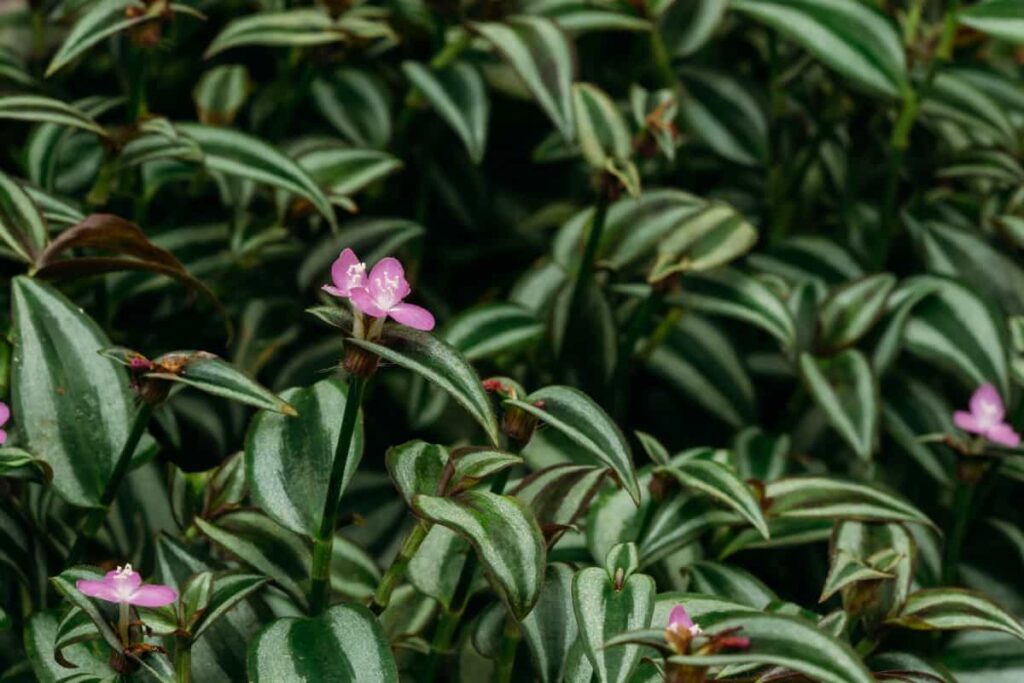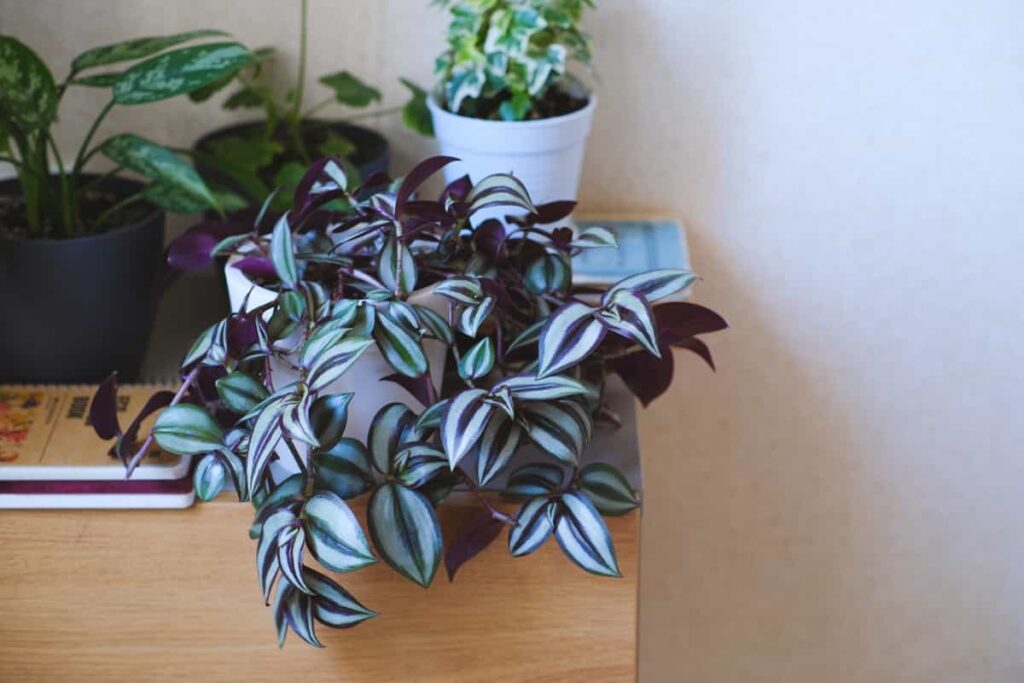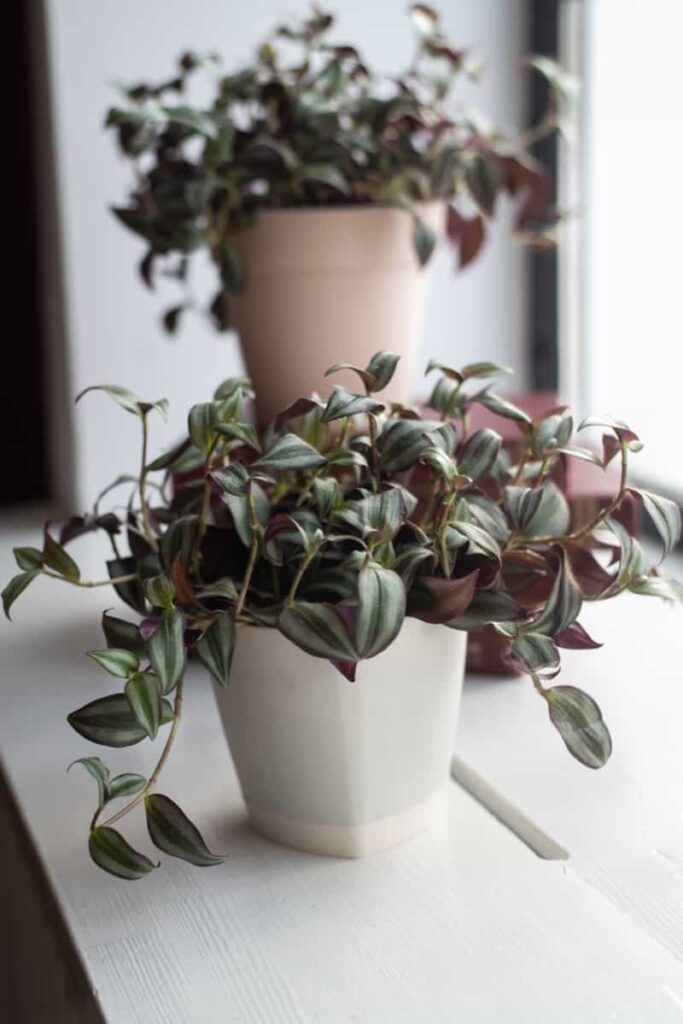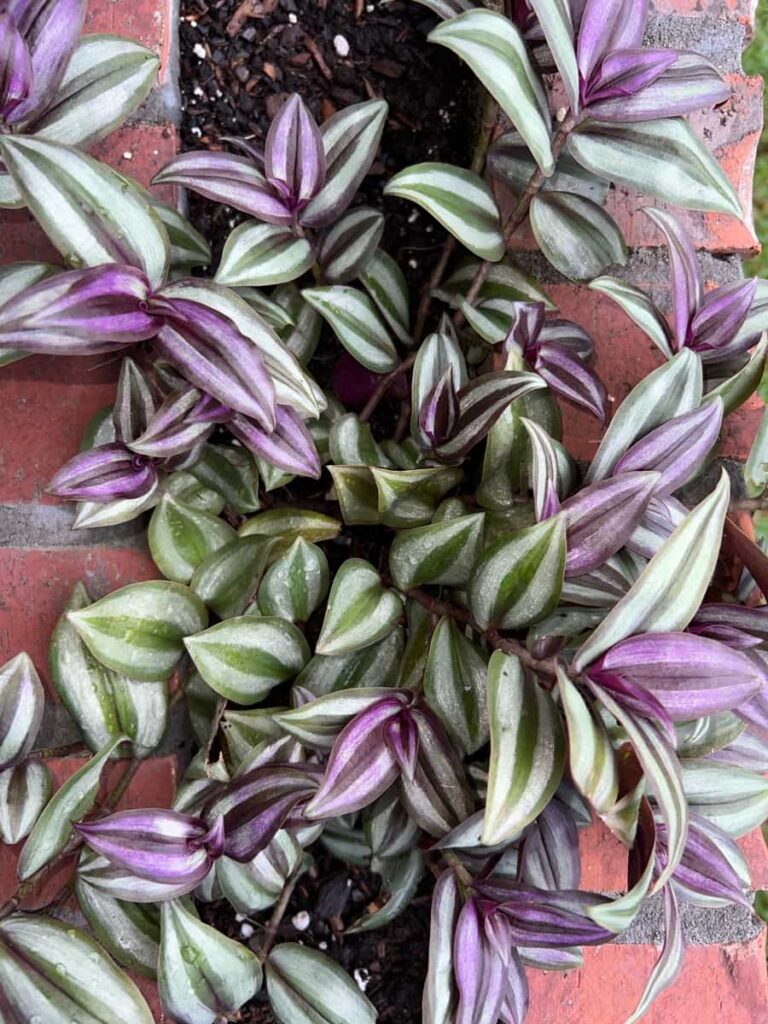Wandering Jew, scientifically known as Tradescantia zebrina, is a fascinating and versatile plant that belongs to the Tradescantia genus. Propagating Wandering Jew is a popular and effective method for expanding your collection of these vibrant, trailing plants.

How to Propagate Wandering Jew
Propagating Wandering Jew Through Stem Cuttings
To start, choose a stem from the parent plant that has at least two nodes. Using clean pruning shears or scissors, make a clean cut just below one of the nodes. Next, remove leaves from the lower half of the cutting to prevent them from rotting in water or soil. You can dip the cut end in hormone powder to encourage root development.
Place the prepared cutting in water or potting mix and keep it moist but not overly wet. Once your new plant has developed strong roots, you can transfer it into its pot with fresh soil and continue caring for it as you would any other Wandering Jew plant.
Using Water Propagation for Wandering Jew
To propagate using water, start by selecting a healthy stem cutting from your existing plant. Make sure the cutting has at least two or three nodes, as these are essential for root development. Once you have your cutting, please place it in a glass of clean water, making sure the nodes are submerged. You can use tap water, but if you have access to rainwater or filtered water, that’s even better.
Change the water every few days to prevent stagnation and ensure oxygen supply to the developing roots. In about two weeks, you should start seeing tiny roots forming at the nodes. Once the roots are about an inch long, you can transfer your cutting into the soil or potting mix. Water propagation for the Wandering Jew plant is an excellent option because it allows you to monitor root growth closely and ensures that your Wandering Jew plant gets all the nutrients it needs during its early stages of development.
Propagating Wandering Jew Through Division
To propagate Wandering Jew through division, begin by carefully removing the mother plant from its container or garden bed. Next, use clean and sharp pruning shears to divide the plant into smaller clumps. Each clump should have several stems and a healthy root system attached.
In case you missed it: How to Propagate Snake Plants: A Step-by-Step Guide

Once divided, you can now replant these individual sections in separate pots or outdoor locations. Make sure each division has enough space for root growth and isn’t overcrowded. The division is an excellent propagation method for Wandering Jew because it promotes vigorous growth in each new section while maintaining genetic integrity throughout the process.
Using Rhizome Cuttings for Wandering Jew Propagation
To propagate through rhizome cuttings, start by selecting a mature and healthy Wandering Jew plant with well-developed rhizomes. Carefully remove one or two of these rhizomes with a sharp knife or garden shears. Next, prepare a small pot filled with well-draining soil mix. Plant the selected rhizome horizontally into the soil, ensuring that any roots attached to it are buried as well.
Place your newly planted cutting in a warm and bright location without direct sunlight. Keep the soil slightly damp throughout the rooting process by misting or lightly watering when needed. In just a few weeks, you’ll start seeing new growth emerging from the top of your cutting. This indicates successful root formation and signifies that your propagated Wandering Jew is ready to be cared for like any other established plant.
Propagating Wandering Jew Through Leaf Cuttings
To start, select a healthy, mature leaf from your Wandering Jew plant. Using clean, sharp scissors or a knife, carefully cut the leaf at its base, making sure to include a small portion of the stem. Next, prepare a small container filled with moist potting soil or a well-draining propagation mix. Dip the cut end of the leaf into hormone powder to encourage root growth. Gently place the cutting into the soil, burying about half an inch of it while keeping the remaining portion upright above the surface.
Mist the cutting with water to provide moisture, and cover the cutting with a bag to create a humid environment. Keep your propagated leaf cutting in bright indirect light and maintain moisture in the soil. Once roots have developed and new growth appears on top, you can transplant your newly rooted Wandering Jew into its pot using regular potting soil mixed with perlite for added drainage.
Propagating Wandering Jew Through Air Layering
Air layering involves encouraging roots to form on a stem while it is attached to the parent plant. This technique is particularly useful for plants like the Wandering Jew, as it allows you to create new plants without damaging the original. To air-layer your Wandering Jew, start by selecting a healthy stem and making a small incision just below a node. Gently remove any leaves or buds from this area, as they can interfere with root growth.
In case you missed it: How to Propagate Prickly Pear Cactus from Cuttings, and Seeds: Planting, Growing Indoors, Outdoors, and Care

Next, apply rooting hormone to the exposed section of the stem. Take some moist sphagnum moss and wrap it around the incised portion of the stem. Over time, you’ll notice roots starting to emerge from the wrapped portion of your Wandering Jew’s stem; once these roots are well-established, carefully cut below them and pot up your new plant.
Using Tuber Division for Wandering Jew Propagation
This technique involves separating the tubers from the main plant and replanting them to create new plants. To begin, carefully dig up the Wandering Jew plant and gently remove any excess soil from the roots. Next, use a clean knife or shears to cut away individual tubers from the main root system. Once you have separated the tubers, prepare pots with well-draining soil mixtures.
Place each tuber in its pot and cover it lightly with soil. Water thoroughly after planting. Keep your newly planted tubers in a warm area with indirect sunlight until they establish themselves in their new containers. Within a few weeks, you should start seeing signs of growth, indicating successful propagation.
Propagating Wandering Jew Through Suckers
To propagate Wandering Jew through suckers, carefully remove them from the parent plant using a scissors. Make sure you include some roots along with the sucker. Prepare a pot filled with well-draining soil and create a small hole for placing the sucker in. Gently place it in the hole and cover it with soil, pressing lightly to secure it in place.
Keep the newly planted sucker evenly moist but avoid overwatering the plant. Please place it in an area with bright indirect light, away from direct sunlight. Within a few weeks, you should start seeing new growth emerging from the sucker. Once it has established its roots, you can treat it as a mature Wandering Jew plant and care for it accordingly.
Propagating Wandering Jew/tradescantia Zebrina Through Seed
While propagating Wandering Jew through seed may not be the most common method, it is still a viable option for those willing to take on the challenge. However, it’s important to note that this method can be more time-consuming compared to other propagation methods. Start by collecting mature seeds from the plant. These small brown or black seeds are typically found in dried seed pods. Once you have collected the seeds, prepare a well-draining potting mix and moisten it slightly.
Next, sow the seeds onto the surface of the potting mix and press into the soil without covering them completely. Covering your container with a clear plastic bag or using a propagator can create a humid environment ideal for seed germination. Keep monitoring moisture levels and ensure adequate ventilation within your propagation setup.
Commonly Asked Questions (FAQ) on Propagating Wandering Jew
Should I Use Water or Soil for Propagation?
Both methods work well for Wandering Jew. Water propagation allows you to see the progress of root growth, while soil propagation ensures quicker establishment once rooted.
In case you missed it: How to Propagate Peace Lily: Flowering Stages, Planting, Growing, and Care for Indoors and Outdoors

Can I Propagate During Any Season?
While spring and summer are ideal times for propagation due to increased warmth and humidity, you can still propagate Wandering Jew successfully with proper care in other seasons.
How Long Does It Take for Wandering Jew to Propagate?
Within just one week, you’ll start seeing new root growth on your cutting. After two weeks, the stem will have developed a solid set of roots ready for transplantation.
Conclusion
Propagating the Wandering Jew plant is not only a rewarding experience for plant enthusiasts but also an important practice in maintaining and preserving this beautiful species. Luckily, there are several propagation methods available for Wandering Jews. Whether you choose stem cuttings, water propagation, division, rhizome cuttings, leaf cuttings, air layering, tuber division, or suckers and offset division – each method allows us to create new individuals from existing ones.
- Profitable Village Farming Business Ideas in 2024
- High-Yield Aquaculture: Fast-Growing Fish for Farming
- Effective Fish Pond Construction Techniques for Beginners
- Irrigation and Water Management in Pineapple Farming
- Blossom to Harvest: Mastering Flowering and Pollination in Papaya Farming
- Pig Fattening Essentials: From Selection to Sale for Beginners
- Raising Wagyu Cattle: A Complete Guide for Premium Beef Production
- Soil Types and Their Water Holding Capacity
- Optimizing Irrigation Schedules for Coconut Groves for Enhanced Yield
